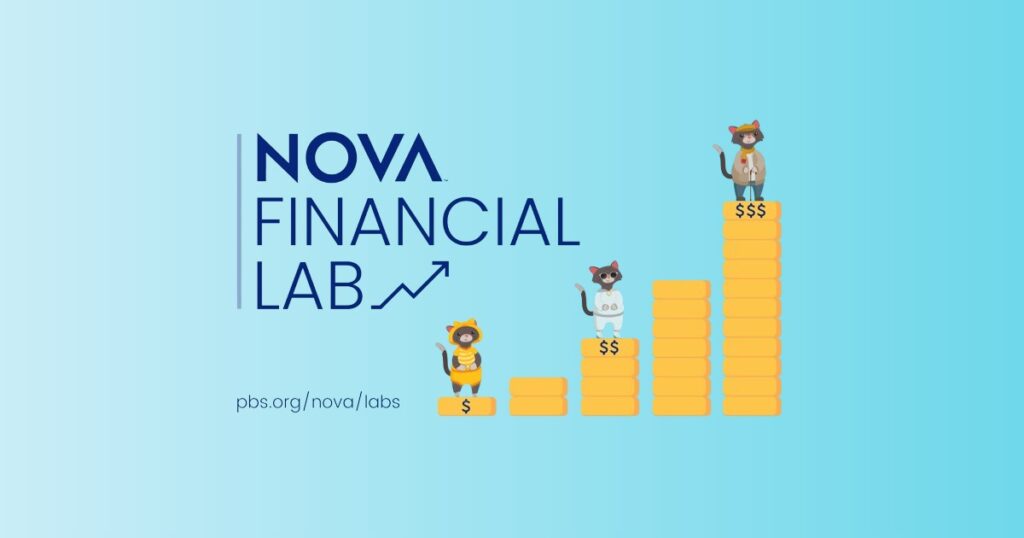
Content Partner
Grades 6-8, 9-12
Happy EconEdMonth! Celebrate economics all month long by visiting EconEdMonth.org

Don't have an account yet? Sign up for free
Don't have an account yet? Sign up for free


Students read two online stories that introduce them to the elements of a budget and show that a successful budget balances money coming in (income) with money going out (expenses and savings). Follow-up activities point out the value of a budget. Students learn that a budget can help us make sure we buy the things we really need and want. A budget can also help us save for things that we can’t afford to buy right now. In a culminating activity, students create a budget they could use to achieve a savings goal.
 Write the word “budget” on the board. Ask students to tell you what they think a budget is. Perhaps they have heard their parents or the principal say that something is not in the budget. If they have no idea, suggest that they look the word up in the dictionary. (budget, n.: a plan adjusting expenses to income). Summarize by saying a budget is a plan that shows how much money comes in (income) and how much money goes out (expenses and savings). Tell students they are going to participate in a set of activities that will show them how to make a budget and why making a budget is important.
Write the word “budget” on the board. Ask students to tell you what they think a budget is. Perhaps they have heard their parents or the principal say that something is not in the budget. If they have no idea, suggest that they look the word up in the dictionary. (budget, n.: a plan adjusting expenses to income). Summarize by saying a budget is a plan that shows how much money comes in (income) and how much money goes out (expenses and savings). Tell students they are going to participate in a set of activities that will show them how to make a budget and why making a budget is important.
Activity 1:
 Have students read the story Tim’s Turn to Learn and answer the questions on the worksheet. If you plan to do the extension activity that calls for students to track their spending, you may also want the students to print out a copy of the “My Spending Tale” at the end of the story for future use. If you don’t want your students to print documents print the worksheet and spending records for them in advance.
Have students read the story Tim’s Turn to Learn and answer the questions on the worksheet. If you plan to do the extension activity that calls for students to track their spending, you may also want the students to print out a copy of the “My Spending Tale” at the end of the story for future use. If you don’t want your students to print documents print the worksheet and spending records for them in advance.
Conduct a class discussion of students’ answers to the worksheet questions:
Examine as a class some of the spending plans that students came up with to help Tim save $12.00 each week. To help the students see the changes, and to emphasize there is more than one way for Tim to achieve his goal, project Tim’s original spending, using a transparency on an overhead projector and show them Tim’s Budget. Show some of the students’ budgets on the transparency.
[NOTE: Tim’s budget is available online ]
Below are further questions that can be used for review:
[NOTE: If your students are not familiar with the concepts of economic needs and wants, explain that economic needs are things we must have to survive such as food, water and shelter. Wants are things that are nice to have–but not necessary for survival. Movie tickets, bubble gum, and jewelry are examples of wants.]
Conclude the activity by pointing out that people can reduce their spending in many ways. Their spending plans will be influenced by their needs, wants, and personal preferences.
Activity2:
Have the students read the story Heather Learns About Earning to find out how Heather increased the money coming in (income). Then discuss the THINK ABOUT IT questions:
[NOTE: In this story, only money that is earned is labeled “income”. For budget purposes, an allowance is also considered income. While some students earn their allowances, others receive an allowance as a gift. Explain to students that an allowance is an amount they can count on and as such, can be included as income. It is difficult to include other gifts in a budget because the size and timing of gifts cannot be counted on. One way to deal with sporadic gifts is to determine in advance how gift money will be divided between saving and spending. For example, a child may decide to save half of any gift money and spend the rest. Some parents and guardians insist that their children follow such a plan.]
Activity 3:
Have students use the sample budget to answer the questions in the budget activity. If computer time is limited, you can print out this activity and have students complete it using paper and pencil. Here are the worksheet questions and answers:
[NOTE: Students may need to be shown how to calculate the number of weeks in question.]
Point out to students that the money in (income) equals the money out (spending and saving) in the worksheet budget. Discuss the following:
Ask the students to list the reasons why keeping a budget is important. Write their responses on the board. [Potential answers include keeping track of spending, making sure money is spent on what we want the most, helping us to save for big future purchases, and avoiding impulse purchases.]
Assessment is based on the student activities and completion of an activity in which students https://www.preview2.econedlink.org/wp-content/uploads/2021/01/Money-Comes-and-Goes_-Create-a-Budget.docx to help them achieve a savings goal.

Content Partner
Grades 6-8, 9-12

Grades 6-8

Grades 6-8, 9-12

Grades 6-8, 9-12
